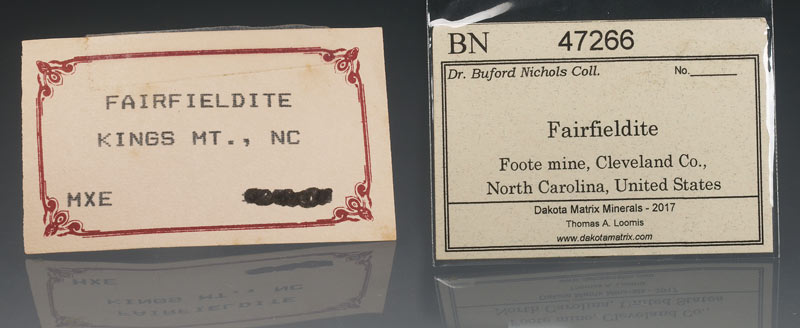- Home About RM Minerals
- Virtual Photo Museum Blog RM Contact
- Microscopy and instruments How to Buy Disclaimer
Copyright 2010-2024
www.rosellminerals.com

Fairfieldite is a rare calcium and manganese phosphate of which the best known specimens belong to this North Carolina mine. In this specimen we can observe various aggregates of tabular crystals, transparent, very well defined and with a slightly beige tone. An excellent specimen for the species.
From what we have been able to elucidate, it is an old specimen, which belonged to the collection of Dr. Buford Nichols, a renowned North American pediatrician who is fond of minerals and specialized in phosphates.

Excellent, sculptural, two-sided baryte "rose" from Oklahoma. Oxidized sand grains are included in the baryte crystal structure with colorful effect. Essentially a floater. The hole adds much aesthetics. Baryte was precipitated in interconnected voids in the rock, probably from barium-rich marine waters that covered the Permian Garber Sandstone during or shortly after its deposition about 250 million years ago. The rose-like concretions incorporated the iron-stained quartz sand grains and thus acquired the red color of the host Garber Sandstone (online). These are the official Oklahoma State Rock.
Very interesting article in Mineralogical Record July-August 2008.
Excellent, sculptural, two-sided baryte "rose" from Oklahoma. Oxidized sand grains are included in the baryte crystal structure with colorful effect. Essentially a floater. The hole adds much aesthetics. Baryte was precipitated in interconnected voids in the rock, probably from barium-rich marine waters that covered the Permian Garber Sandstone during or shortly after its deposition about 250 million years ago. The rose-like concretions incorporated the iron-stained quartz sand grains and thus acquired the red color of the host Garber Sandstone (online). These are the official Oklahoma State Rock.
Very interesting article in Mineralogical Record July-August 2008.
